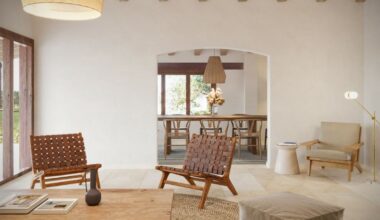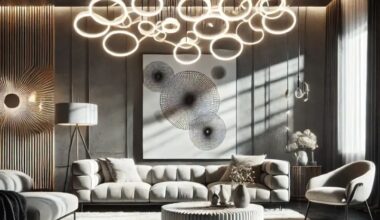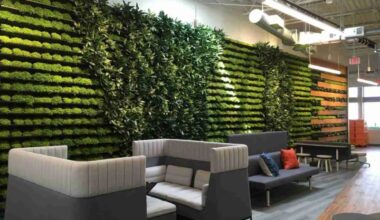The layout, lighting, color schemes, and even the arrangement of aisles are all meticulously planned to guide shoppers through the store and encourage specific purchasing decisions.
Let’s explore how supermarket interior design affects what we buy, and how making subtle changes to a supermarket interior can significantly increase the average basket value of your customers.
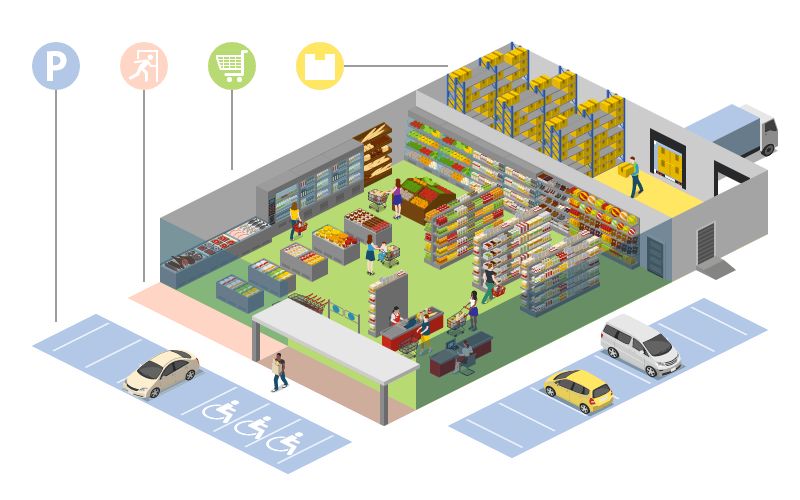
1. Guiding the shopper’s journey
Supermarket layouts are often designed using a grid system, which creates a logical and easy-to-navigate flow for customers.
However, this design also plays a crucial role in how long shoppers stay in the store and how many products they interact with.
Most supermarkets place essential items like dairy and bread at the back, requiring shoppers to walk through other aisles, increasing the likelihood of impulse purchases.
According to expert-led studies, nearly 60% of supermarket purchases are unplanned. By strategically placing high-demand items further away, supermarkets can significantly increase customer exposure to other products, boosting overall sales.
In a well-known supermarket chain in Dubai, a redesign shifted popular items like milk and eggs to the far end of the store. This subtle change increased the average time spent in the store by 15%, resulting in a 10% rise in non-essential item sales.
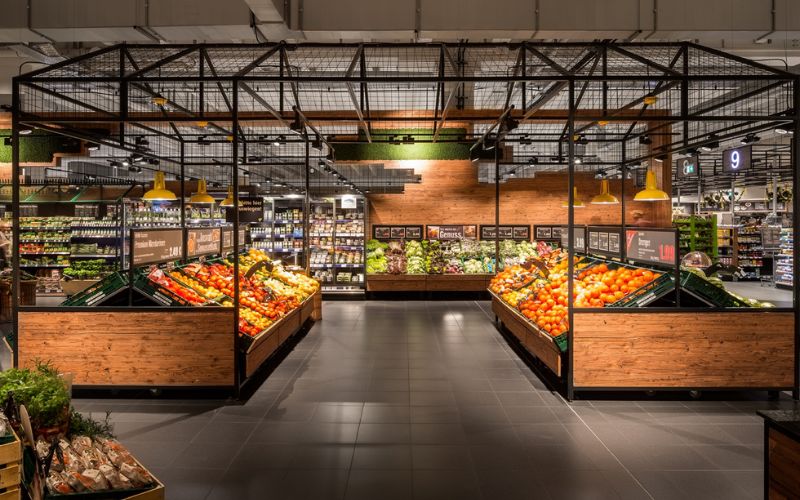
2. Creating the right mood
Lighting in a supermarket does more than just illuminate products; it sets the mood and can even influence how we perceive food.
Bright, even lighting is used in most areas to give the space a clean and organized feel, but different lighting is applied to certain sections to enhance the appeal of specific products.
For instance, warmer lighting is often used in bakery sections to make the fresh bread and pastries appear more inviting and delicious.
Supermarkets use color temperature to control how fresh or appealing food appears. Warmer tones enhance the look of produce, while cool lighting highlights the cleanliness and freshness of packaged goods.
A retail study conducted in Europe found that supermarkets with warmer lighting in their fresh produce sections saw a 5% increase in fruit and vegetable sales, demonstrating the power of lighting in influencing consumer choices.
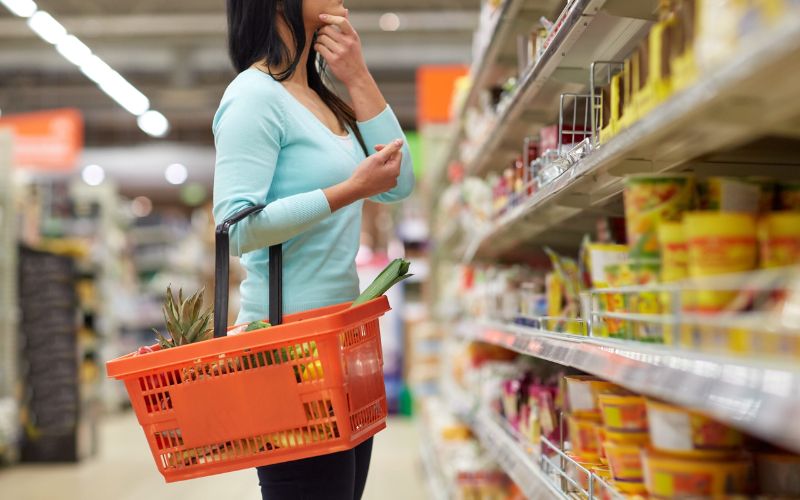
3. Driving impulse buys
The width of supermarket aisles is another subtle design element that influences purchasing behavior.
Narrow aisles create a sense of urgency and can push shoppers to grab items quickly, while wider aisles allow more leisurely browsing.
Products placed at eye level have the highest chance of being picked up, especially those that are easy to grab, such as snacks and confectioneries.
Eye-level shelving is prime real estate in a supermarket, with brands often paying a premium for this spot. This “golden zone” maximizes visibility and increases the likelihood of impulse buys.
A study on shelf placement in Dubai supermarkets showed that products placed between hip and eye level accounted for over 50% of total sales. This demonstrates the power of product positioning in influencing what shoppers choose.
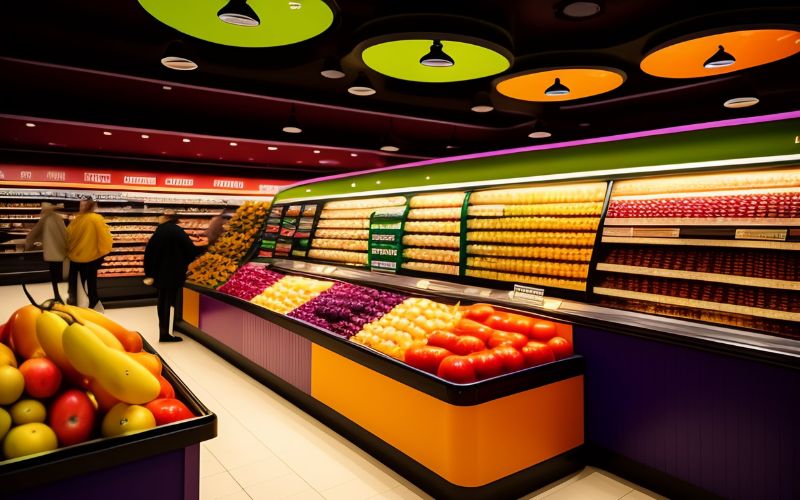
4. Evoking emotions and actions
Colors play a significant role in retail environments, affecting not only mood but also purchasing behavior.
Red and yellow, for example, are often used in signage to grab attention and convey urgency, making them effective for promoting sales or discounts. In contrast, green is frequently used in the produce section to reinforce perceptions of freshness and health.
Consider the color psychology behind your brand. Red can evoke feelings of excitement and urgency, which is why it’s often used in sale signs, while green creates a calming effect that resonates with organic and fresh food sections.
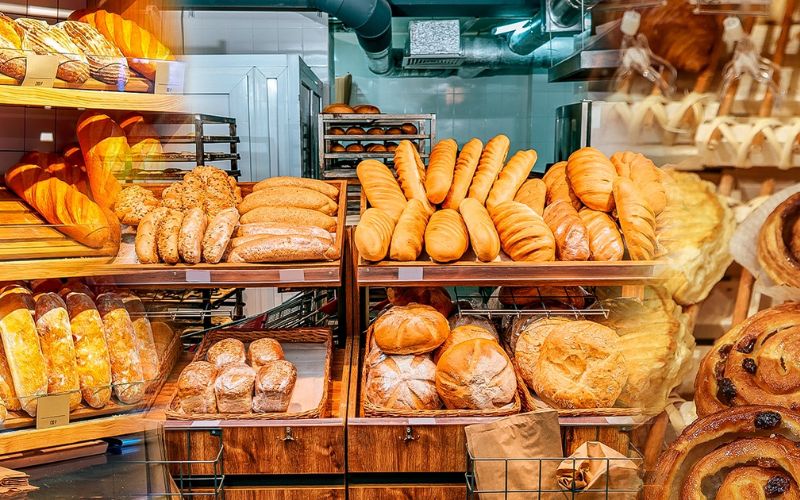
5. Creating a sensory experience
While most supermarket designs focus on visuals, successful retailers also engage other senses to create a more immersive shopping experience.
In-store music can dictate the pace of shopping, with slower music encouraging shoppers to take their time and browse, while faster beats can increase turnover rates. The smell of freshly baked bread or brewed coffee can also entice shoppers to explore certain areas of the store, leading to impulse purchases.
A study by the Journal of Retailing found that supermarkets that used olfactory cues, like the smell of fresh bread, saw an increase in foot traffic to the bakery section by 30%.
A supermarket in Downtown Dubai incorporated subtle background music and aroma diffusers near their bakery and coffee sections, which led to a notable 12% increase in bakery sales. By appealing to multiple senses, the store created a more engaging and profitable shopping environment.
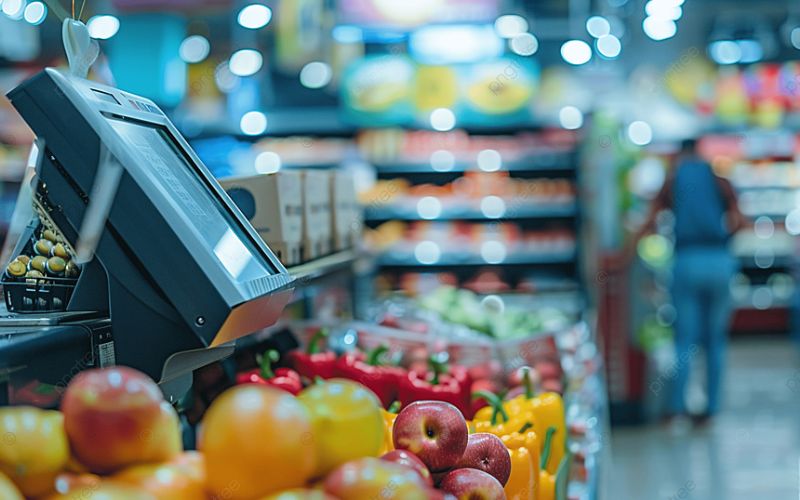
6. The perfect checkout experience
The checkout area is a key zone for maximizing sales, especially for last-minute impulse buys.
Supermarkets often place small, high-margin items like candies, magazines, and bottled drinks near the checkout counters. These items are selected specifically for their low price point and quick decision-making appeal.
Consumers often make their final purchase decisions while waiting in line. Placing convenience items at this stage increases the likelihood of additional sales.
Focus on sales, and satisfaction
Supermarket interior design is a powerful tool that influences customer behavior, encouraging both planned and impulse purchases.
From layout to lighting and sensory experiences, every aspect of a store’s design works together to create an environment that drives sales while enhancing customer satisfaction.
Whether you’re a retailer looking to optimize your space or a consumer aiming to understand how stores influence your buying decisions, the design of a supermarket plays a critical role in shaping the shopping experience.
By paying attention to these design principles and incorporating them into your retail space, you can create a shopping environment that is not only functional but also highly profitable.
When undergoing a renovation project such as this, finding the right partners is crucial… and that’s where we can help.
Using our service, we can find the perfect design expert that specializes in your desired area of work – completely free of charge!
Contact us today to apply for your free consultation.
